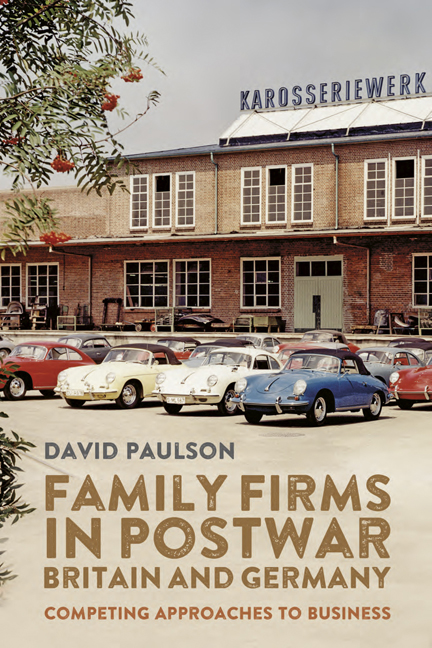10 - Jensen Motors Ltd., West Bromwich
Published online by Cambridge University Press: 10 January 2024
Summary
Almost five decades after its production ceased and its manufacturer went into liquidation, the Jensen Interceptor remains an iconic touring car. For the New York Times, even in 2021 the “Jensen Interceptor's very name suggests exceptional power and drama, tugging at the heartstrings of car lovers. The machine in the flesh makes good on the imagery.” But despite its appeal today and at the time of its production in the late 1960s and early 1970s, the Interceptor could not save a company which was characterised less by its appealing flagship product than by the mismanagement that made its survival impossible.
Early History to 1945
Brothers Alan and Richard Jensen were Birmingham-born car enthusiasts and motor-trade apprentices. From the moment they hand-crafted their own stylish sports body onto a standard car chassis in 1928, their youthful brilliance earned them orders for custom models and the admiration of vehicle designers. In 1932, both still in their twenties, they were appointed joint managing directors of a truck builder in West Bromwich, quickly accumulating broad experience in bodybuilding. Unlike Wilhelm Reutter and Fritz Keiper, they were not experienced Meister. But they were capable. In parallel with trucks they developed stylish custom-built sports cars, most famously for Clark Gable, changing the company name to Jensen Motors Ltd. in 1934 and working with numerous skilled workers who would remain with them for the next thirty years. In a foreshadowing of their future preference for working with American components, they met Edsel Ford and created a number of stylish coupes using handmade Jensen bodies on Ford chassis. Precocious technical acumen was combined with the personal credibility to develop commercial relationships: when the newly launched Jensen S Type was praised by The Motor in 1936, they were still only thirty and twenty-seven years old. And while their sports cars continued to attract attention, in 1937 they produced the world's first aluminium bodied commercial vehicle, followed by the first Pantechnicon, or high-bodied furniture removal truck. When their factory was compelled to switch to war work, they showed their innovativeness again with the Jen-Tug, a new type of commercial tractor-trailer combination.
- Type
- Chapter
- Information
- Family Firms in Postwar Britain and GermanyCompeting Approaches to Business, pp. 264 - 289Publisher: Boydell & BrewerPrint publication year: 2023



